Tobias Brixner | University of Würzburg | Würzburg, Germany
“Space- and time-resolved multidimensional spectroscopy”
Scientific Talks, Session III | Monday, September 12 | 16:20 – 16:50

Linear absorption, fluorescence, and Raman spectra are used routinely to characterize molecules and materials. Why bother with much more complicated spectroscopic experiments involving sequences of (many) femtosecond pulses and high nonlinear orders? Which types of additional information can be revealed and how can one realize additional spatial resolution?
Biological systems are complex objects, and thus one must address the question of how to disentangle multiple overlapping spectroscopic signatures. One possible solution is to use more than one parameter for discrimination, i.e., one does not rely on merely one frequency axis within a linear spectrum. Instead, we employ and combine multiple frequency and time axes, spatial resolution, and high nonlinear orders to facilitate spectroscopic selectivity.
Ultrashort light pulses offer temporal resolution but, in general, come at the cost of spectral resolution because they are broadband. Coherent two-dimensional (2D) spectroscopy, however, combines time and frequency information in an optimal fashion. This makes it possible to follow energy transport in biological light-harvesting systems [Nature 434, 625 (2005)]. After hundreds of demonstrations in the literature, 2D electronic spectroscopy is now a standard spectroscopic tool for analyzing (photo)biological systems [Adv. Energy Mater. 7, 1700236 (2017)] and chemical dynamics [Angew. Chem. Int. Ed. 54, 11368 (2015)]. It can be applied in the condensed phase but also in molecular beams [Nat. Commun. 9, 2519 (2018)].
For large systems, the 2D frequency resolution alone may not be sufficient because many chromophores may overlap in the ensemble. We have developed methods using fifth or even higher order in perturbation theory (as compared to the conventional third order) to allow resolution of energy transfer even under such circumstances [Nat. Commun. 9, 2466 (2018), Nat. Commun. 10, 4615 (2019), Chem. Sci. 11, 456 (2020)]. We find that the diffusion equation often assumed to describe energy transport does not hold for such systems in general.
We also realized direct spatial resolution. For this purpose, we developed fluorescence-detected 2D spectroscopy which avoids solvent contributions and scattering artefacts [Nat. Commun. 10, 4735 (2019)]. This approach offers some advantages and some differences compared to conventional coherent detection [PCCP 22, 21222 (2020), J. Chem. Phys. 153, 144204 (2020)]. Combination with fluorescence microscopy at high numerical aperture (NA = 1.4) provides spatial resolution of ~260 nm [Opt. Express 26, 3915 (2018), Nano Lett. 20, 6452 (2020)]. We used this technique to determine the exciton–phonon coupling strength in 2D materials [Nat. Commun. 12, 954 (2021), Phys. Rev. Lett. 128, 087401 (2022)].
For even higher spatial resolution, we combined 2D spectroscopy with photoemission electron microscopy (PEEM) [Science 333, 1723 (2011], which provides 2D frequency information at a spatial resolution down to 3 nm [Rev. Sci. Instrum. 90, 113103 (2019)].
